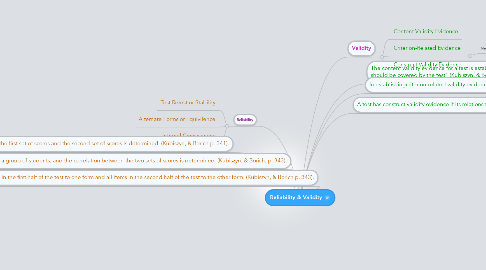Reliability & Validity
par April Tabb


1. Reliability
1.1. Test Retest or Stability
1.2. Alternate Forms or Equivilence
1.3. Internal Consistancey
2. Test –retest is a method of estimating reliability that is exactly what its name implies. The test is given twice and the correlation between the first set of scores and the second set of scores is determined. (Kubiszyn, & Borich p. 341).
3. If there are two equivalent forms of a test, these forms can be used to obtain an estimate of the reliability of the scores from the test. Both forms are administered to a group of students, and the correlation between the two sets of scores is determined. (Kubiszyn, & Borich, p. 343).
4. One approach to determining a test’s internal consistency, called split halves , involves splitting the test into two equivalent halves and determining the correlation between them. This can be done by assigning allitems in the first half of the test to one form and all items in the second half of the test to the other form. (Kubiszyn, & Borich p. 343).
5. The content validity evidence for a test is established by inspecting test questions to see whether they correspond to what the user decides should be covered by the test" (Kubiszyn, & Borich p. 330).
6. Validity
6.1. Content Validity Evidence
6.2. Criterion-Related Evidence
6.2.1. New node
